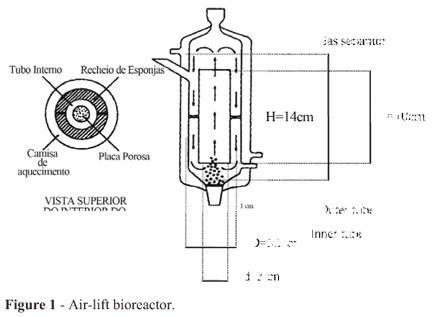The metalworking industry is responsible for one of the most complex and difficult to handle oily effluents. These effluents consist of cutting fluids, which provide refrigeration and purification of metallic pieces in the machining system. When these effluents are biologically treated, is important to do this with autochthonous microorganisms; the use of these microorganisms (bioaugmentation) tends to be more efficient because they are already adapted to the existing pollutants. For this purpose, this study aimed to use two indigenous microorganisms, Epicoccum nigrum and Cladosporium sp. for metalworking effluent treatment using an air-lift reactor; the fungus Aspergillus niger (laboratory strain) was used as a reference microorganism. The original effluent characterization presented considerable pollutant potential. The color of the effluent was 1495 mg Pt/L, and it contained 59 mg/L H2O2, 53 mg/L total phenols, 2.5 mgO2/L dissolved oxygen (DO), and 887 mg/L oil and grease. The COD was 9147 mgO2/L and the chronic toxicity factor was 1667. Following biotreatment, the fungus Epicoccum nigrum was found to be the most efficient in reducing (effective reduction) the majority of the parameters (26% COD, 12% H2O2, 59% total phenols, and 40% oil and grease), while Cladosporium sp. was more efficient in color reduction (77%).
Epicoccum nigrum; Cladosporium sp.; metalworking effluent; air-lift reactor





